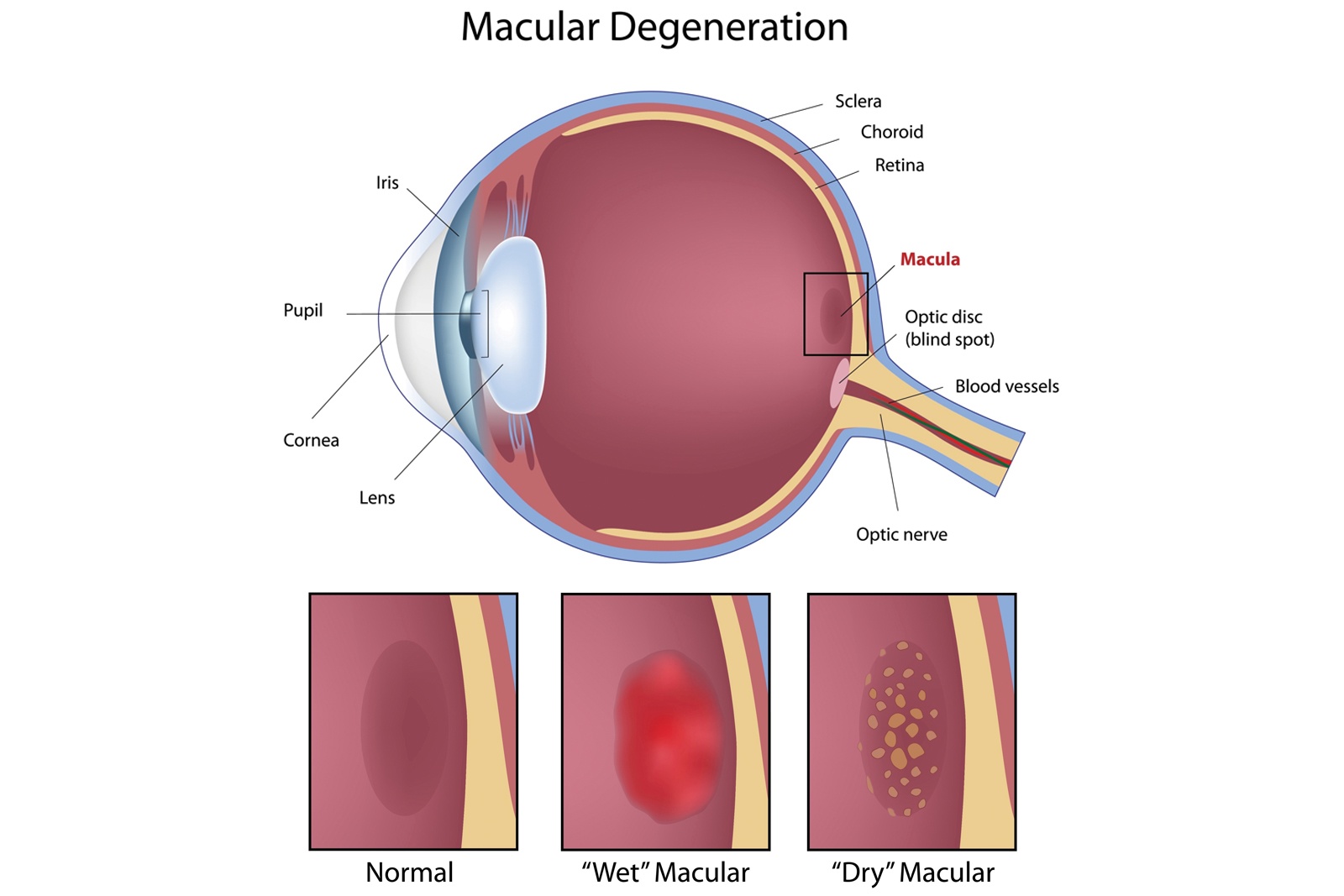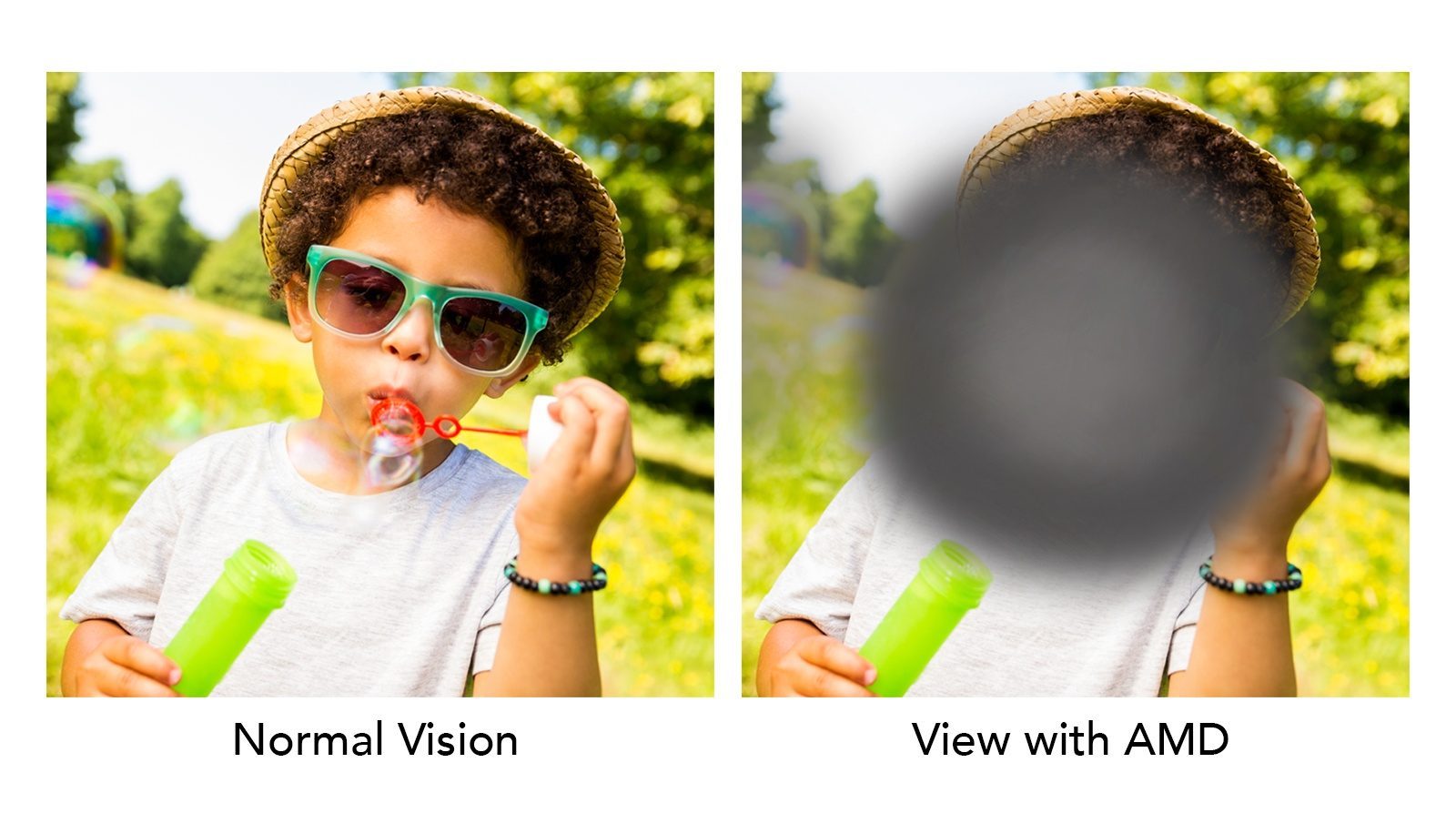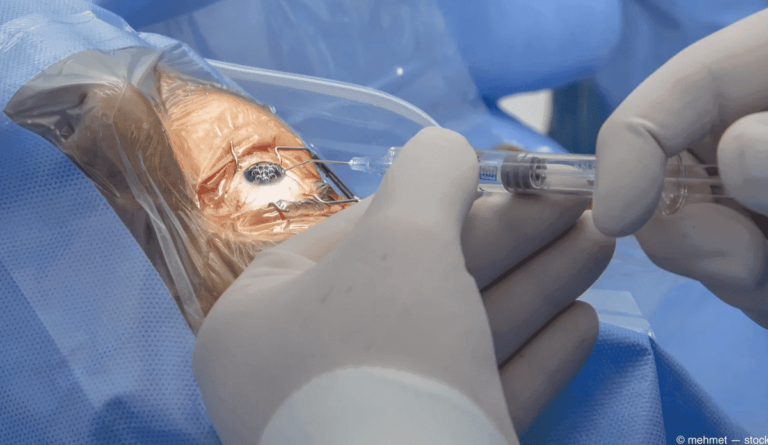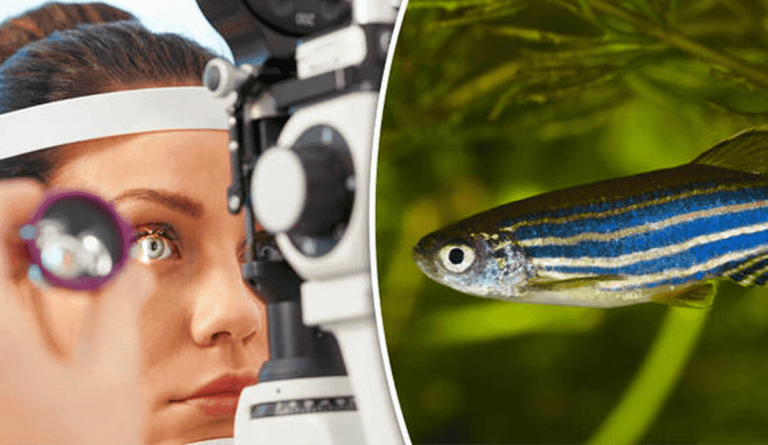
Posted By: VISION EASE BLOG POSTS
Age-Related Macular Degeneration (AMD) is the leading cause of significant vision loss in developed countries. While most patients are referred to a specialist once an AMD diagnosis is reached, their eye care provider is likely the first point of contact. Here are some basic questions eye care providers receive about this potentially devastating eye disease:
1. What Is Macular Degeneration?
Macular degeneration is an age-related eye disease that affects the macula, which is the most sensitive part of the light-sensitive retina in the back of your eye. The macula controls central vision, color vision, and your ability to see fine detail. There are two types of macular degeneration: dry AMD and wet AMD. Of the two, dry AMD is much more common and usually causes less severe vision loss. Only about 10 percent of macular degeneration cases are wet AMD, which causes leaking of blood vessels within the eye and more serious vision loss.

2. How Common Is It?
According to the American Society of Retina Specialists, an estimated 15 million Americans have age-related macular degeneration, and AMD is the leading cause of central vision loss and legal blindness among adults over age 65.
3. What Causes AMD?
AMD appears to be associated with oxidative changes in the eye that are associated with the aging process. Also, many severe cases of macular degeneration have a genetic cause.
4. Who Is At Risk?
Macular degeneration more commonly affects Caucasians than African-Americans or Latinos. Risk for people of all races increases with age, and those with a family history of macular degeneration are at even greater risk. Smoking doubles your risk of AMD, and high lifetime exposure to the sun’s UV and HEV (high energy visible or “blue light”) rays also appears to be a risk factor.

5. What Are Symptoms?
A common early symptom of AMD is a small blurry spot in the center of your visual field that cannot be corrected with glasses or contact lenses. Gradually, central vision becomes more affected, making it more difficult to drive, read and recognize faces. Because AMD does not affect peripheral vision, it doesn’t lead to total blindness, but advanced macular degeneration can cause serious and permanent visual disability (legal blindness).
6. How Is AMD Detected?
In most cases, eye doctors are able to detect signs of AMD during a comprehensive eye exam before you notice symptoms. He or she may order additional testing by a specialist if early signs of macular degeneration are apparent.
7. How Is It Treated?
Currently there are no FDA-approved treatments for dry AMD, but nutritional intervention may be valuable to reduce the risk of dry AMD progressing to wet AMD. In recent years, treatments have been developed that can effectively stop or slow the progression of wet AMD in some cases. These treatments involve the injection of medicine into the eye.
8. Can AMD Be Prevented?
Not smoking and protecting your eyes from the sun are a good start. Also, recent nutritional studies called the Age Related Eye Disease Studies (AREDS and AREDS2) suggest a combination of certain nutrients—including lutein, zinc and vitamins C and E—may reduce one’s risk of progressive macular degeneration. Because of these studies, several “AREDS formula” nutritional supplements have been introduced. Ask your eye doctor if these supplements might benefit you. Remember, the best way to protect your eyes for a lifetime of good vision is to have
routine eye exams and follow the advice of your eye doctor.





